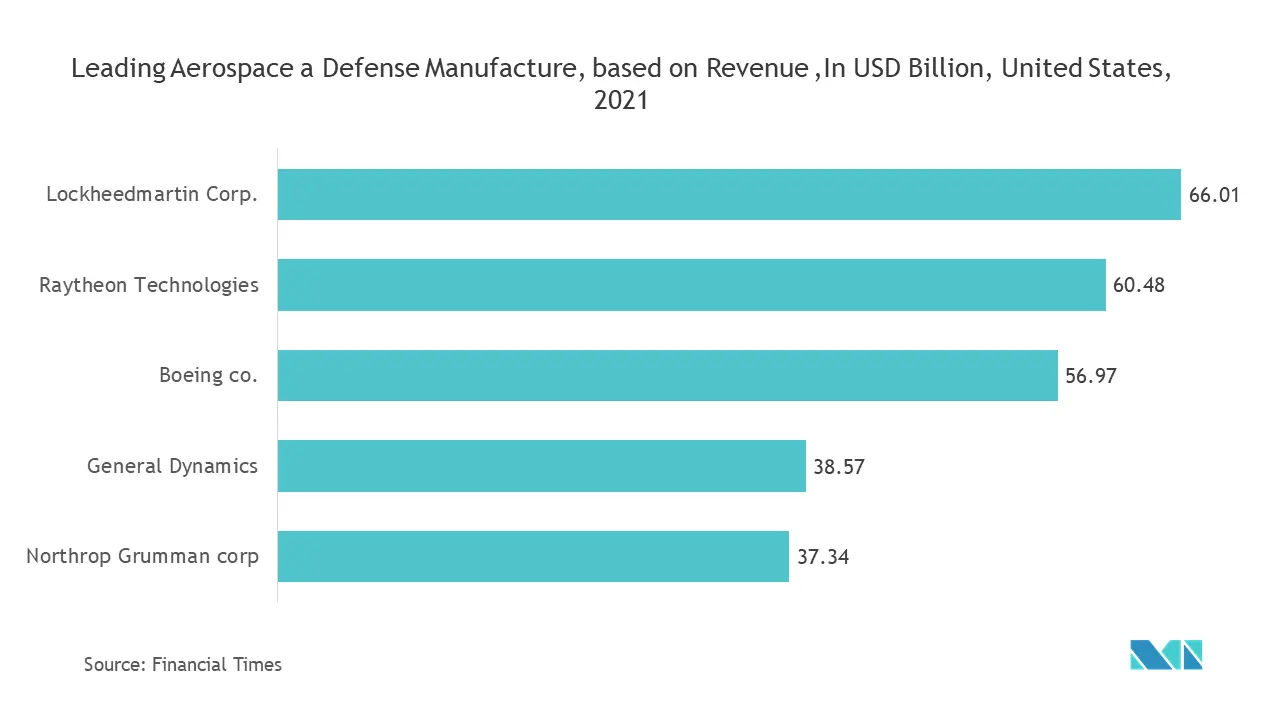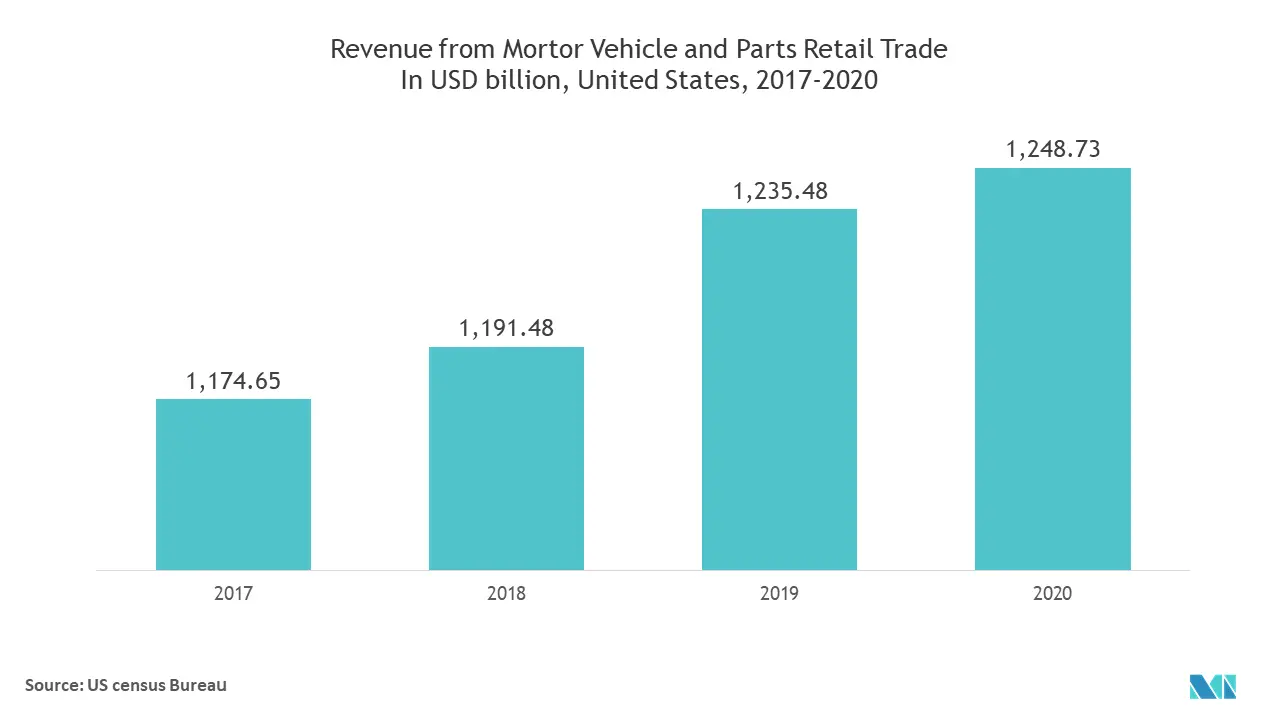Market Trends of North America Automated Test Equipment Industry
This section covers the major market trends shaping the North America Automated Test Equipment Market according to our research experts:
Aerospace and Defense Industry is one of the Factor Driving the Market
- Aerospace and Defense drives innovation in new markets and pioneered technology development in North America. Design engineers in this field are pushing the envelope to advance technology and construct better defensive systems. As a result, research and development teams encounter new obstacles daily.
- For instance, In July 2021 Spirent Federal Systems, one of the prominent providers of positioning, navigation, and timing (PNT) test solutions, has been chosen by BAE Systems to offer a CRPA Test System to support M-Code military GPS technology development. BAE Systems is producing an advanced military GPS receiver and advancing the capabilities of size-constrained and power-constrained service GPS applications, including precision-guided munitions and handheld devices. Spirent Federal is uniquely equipped to provide essential test equipment and assistance to pursue resilient, accurate PNT data in GPS-degraded Navigation Warfare (NAVWAR) conditions.
- One of the most significant advantages of automated testing in the aerospace sector is the low additional cost of repeating the tests. There are various types of failures that infrequently happen, sometimes less than 1% of the time. If a test method is only run once, it will never reveal these flaws in the system.
- Industry partners and government institutions such as the National Aeronautics and Space Administration (NASA) and the Federal Aviation Administration (FAA) are already working on Advanced aerial mobility (AAM) technology, and industry participants are focusing on securely integrating AAM into regular commutes around the world.
- Furthermore, This revolutionary mode of transportation can cause a total paradigm change in mobility.2021 could see more players entering the AAM market and an increased number of OEMs advancing to piloting and testing phases, paving the way for commercialization. This will drive the automated test market in the region.

United States is observing Significant Increase
- In the United States, three states, in particular, are leading the way in process automation: Boston, Detroit, and Austin. These have emerged as the country's foremost robotics hubs. When considering Boston, in the context of robotics, Boston Dynamics outdid themselves when they made their humanoid robot, Atlas. This will boost the automation test equipment market.
- Back in June 2020, Cytiva upgraded its Massachusetts contract biomanufacturing site with increased capacity and automation technologies. The company highlighted the same aligning to a trend of biotechnology companies increasingly outsourcing their manufacturing. More than 70 percent of the clinical trials planned for the US in 2020 are expected to be Phase I and II, with over 50% of companies outsourcing at least some bioprocessing and 19% outsourcing more than half. The company upgraded Fast Trak CGMP facility utilizes a Figurate automation platform and can serve this growing need from small to mid-sized biotechnology companies.
- Corning and Verizon have installed a 5G Ultra-Wideband service in Corning's fiber optic cable manufacturing facility in Hickory, United States. Corning will use Verizon's 5G technology to test the application of 5G to enhance functions, such as factory automation and quality assurance, in one of the most extensive fiber optic cable manufacturing facilities in the world.
- The growth of control valves and actuators that offer low emissions and reduce automation costs. For instance, Clarke Valves, a US-based valve provider, offers Shutter Valves, API 641, and ISO 15848 certified to reduce emissions up to 98%. The valves have been automated tested in the field to prove that emissions are typically eliminated to 0 ppm.
- Though being very conservative, the industry has understood that the in-line analysis provides enormous benefits over the laboratory analysis of grab samples. The value of a real-time and continuous measurement at process conditions is more than periodic analyses of samples taken hours before. Therefore, may no longer represent the real-time information about anything going on at the process side.


